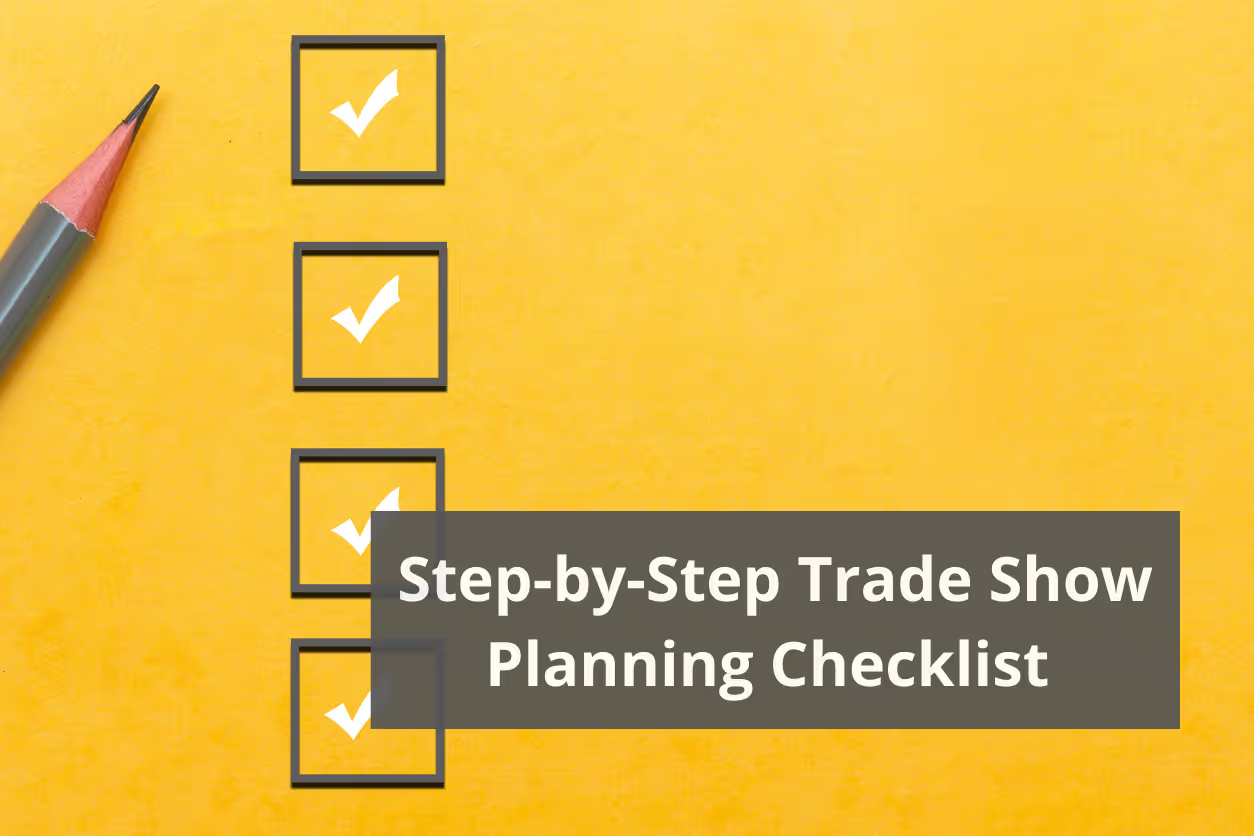If you're new to trade shows, it can sometimes feel like people are talking in a different language when they're explaining booth options at an event.
There are five common booth configurations

1. Standard/Linear
The standard configuration at trade shows, these booths are usually 10' x 10' (100 square feet) at trade shows in the USA. While they may be wider (20', 30' and up), they always remain 10' deep. The booths are open in the front with three sides (left, right & backdrop). Visitors to a linear booth can enter the space from the front side of the space from an aisle. Since this booth type has three sides, it provides a lot of usable space for product shelving, storage, and multiple configurations of desks or display units. It’s greatest disadvantage is that it only receives traffic from one side, and at busy times during the event may prevent or dissuade people from gathering or entering the booth. However, that can be overcome by strategic planning of the space or setting up deeper in the space or along the sides. Standard booth spaces can only be up to 8' tall, preventing the ability to have tall panels or a hanging sign.

2. Perimeter
A perimeter booth is situated along the edges of a convention hall and usually backed up against a wall or the physical edge of a show layout. These booths are 10' deep but can vary in their width similarly to the standard/linear booth. Space restrictions for this booth configuration do usually allow for taller backdrops up to 12' tall. This tends to be the reason businesses will choose or request a perimeter booth is for the increased height. Exhibitors also request perimeter booths due to proximity to the loadin/loadout zones.

3. Corner
Open on two sides, corner booths allow visitors entry into your space from a much wider opening and from two separate aisles, which helps capture a broader range of trade show visitors who may have taken an alternate path through the event. Because a corner booth is at an intersection, there’s more foot traffic and thus more opportunity and frankly more time to impress a show-goer. Less walls does reduce your options for how to exhibit your marketing and does reduce your storage space. However, this layout can be a cost-effective way to stand out from the crowd of inline booths at a show.

4. Peninsula
This booth configuration is open on three sides with one backdrop side. Foot traffic can arrive to the booth from three different aisles hence amplifying your reach to the variety of attendees. This triples the time in which you can impress with your display and brand messaging. You will want to be strategic with your display panels placement as you can squander the impact of the booth space by visually cluttering it. Be mindful of how to incorporate storage into this space or rent off-floor storage. Normally, this booth type will be for a 10’ x 20’ or 20’ x 20’ booth space. However, some may vary. Take the opportunity to experiment.

5. Island
When you absolutely must dominate the show floor and provide a completely distinct experience, an island booth will be your choice. Standing alone, it will have entry from all four sides receiving attendees browsing from eight directions. Storage will be your greatest challenge and if you need small team meeting space, you may want to allocate an area in the center of the booth. Your show display must be sizable or you’ll have a messaging problem in reaching attendees. Island booths are generally four booth spaces combined so at a minimum this space will be 20’ x 20’ but can be larger.
Each booth configuration will come with an increasing price from Standard to Island. Standard is the most common and Island is the most premium of booth configurations. Be sure to review your pre-show booth assignment information so you can be prepared based on the configuration your booth has been assigned. Each configuration requires a different strategy and layout.
Once you know your booth's configuration, also make sure you know the exact space dimensions. 10'x10' is an industry standard for most events. However, some events will have reduced sizes and may assign you into a smaller or larger space based on availability. Do not take anything for granted. Do your homework before arriving. It's better to plan accordingly than to try to adapt on the fly when you're not able to procure anything last minute when onsite.

There is a wide range of booth sizes
The most common depths of a booth are either 10' or 20'. Those two sizes then can vary widely in width depending on what you selected during the registration process. Again, you could be assigned a larger or smaller booth depending on availability.
- 10’ x 10’ (20’) - Usually either inline or corner booths, these sizes - specified in feet - give the dimension of your floor space. Many shows have regulations requiring booths to be less than slimmer than the width of your floor space, since your space begins exactly where your neighbor’s ends.
- 20’ x 20’ (30’) - The dimension of your floor space is given in feet, once again, but booths this size are usually peninsulas or islands. These spaces are usually given premier position, since exhibitors are paying more.
Whatever size or configuration you choose, MOD can help you get the most out of your space through inventive backlit 10 x 20 trade show display kits for all formats. Envision your company in a larger format island or peninsula booth and think about the impact you can create based on size.






.jpg)

.png)

.avif)






